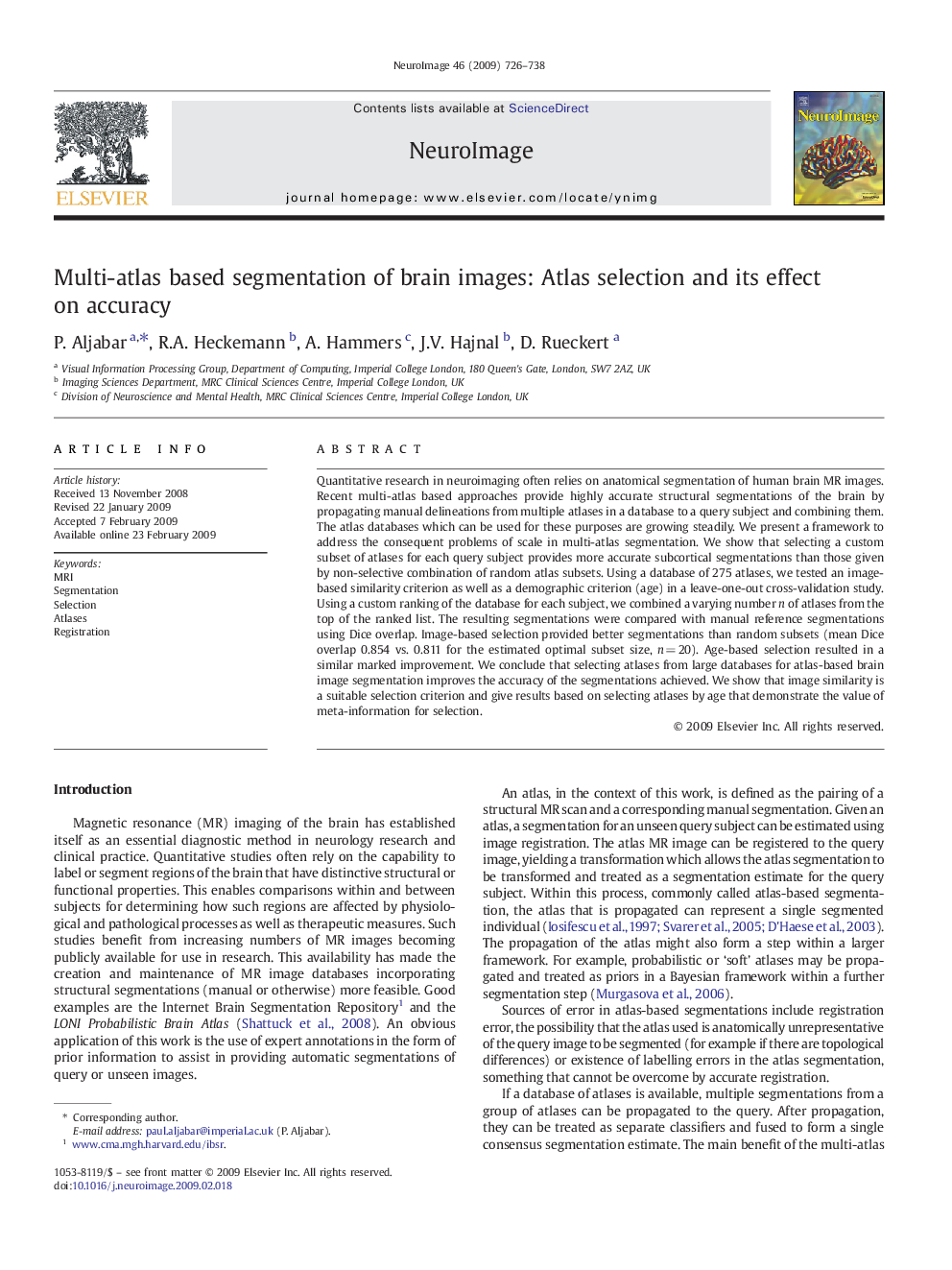| Article ID | Journal | Published Year | Pages | File Type |
|---|---|---|---|---|
| 6037862 | NeuroImage | 2009 | 13 Pages |
Quantitative research in neuroimaging often relies on anatomical segmentation of human brain MR images. Recent multi-atlas based approaches provide highly accurate structural segmentations of the brain by propagating manual delineations from multiple atlases in a database to a query subject and combining them. The atlas databases which can be used for these purposes are growing steadily. We present a framework to address the consequent problems of scale in multi-atlas segmentation. We show that selecting a custom subset of atlases for each query subject provides more accurate subcortical segmentations than those given by non-selective combination of random atlas subsets. Using a database of 275 atlases, we tested an image-based similarity criterion as well as a demographic criterion (age) in a leave-one-out cross-validation study. Using a custom ranking of the database for each subject, we combined a varying number n of atlases from the top of the ranked list. The resulting segmentations were compared with manual reference segmentations using Dice overlap. Image-based selection provided better segmentations than random subsets (mean Dice overlap 0.854 vs. 0.811 for the estimated optimal subset size, n = 20). Age-based selection resulted in a similar marked improvement. We conclude that selecting atlases from large databases for atlas-based brain image segmentation improves the accuracy of the segmentations achieved. We show that image similarity is a suitable selection criterion and give results based on selecting atlases by age that demonstrate the value of meta-information for selection.
